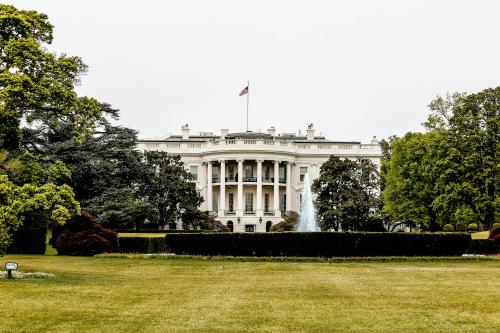As corporations continuously seek to improve and set ever-higher standards for themselves, the hashtag-friendly term ‘greenwashing’ has become especially popular – and reputationally toxic when attributed to corporate efforts.
Greenwashing generally is understood to be an accusation that a company is making false, unsubstantiated or exaggerated statements or marketing claims about its environmental or other ESG efforts, especially when the company is expending more effort marketing those ESG attributes than minimizing the company’s environmental impact.
But the particulars of self-imposed ESG standards vary widely among companies and market observers, allowing interest groups to pick and choose their own definitions of what constitutes greenwashing. That raises daunting concerns for the C-suite, as ESG reporting has become a key topic for disclosures demanded by many investors and customers alike. And now federal securities regulators are entering the picture – one that is already crowded with civil litigants.

THE SEC’S ESG TASKFORCE
In Congress, the House of Representatives overwhelmingly passed legislation (HR 1187) in June 2021 that would give the SEC direct authority to establish formal ESG metrics and require issuers to disclose certain ESG data. That bill, however, continues to languish in the Senate.
Yet even before the House vote on HR 1187, the SEC in March 2021 established its own climate and ESG task force, to be led by the commission’s acting deputy director of enforcement. In announcing the task force, the SEC said the new unit would ‘develop initiatives to proactively identify ESG-related misconduct’ using sophisticated data analysis and other tools ‘to identify any material gaps or misstatements in issuers’ disclosure of climate risks under existing rules.’
In April this year, the SEC’s ESG task force brought its first enforcement action against Vale, a publicly traded Brazilian mining company, for allegedly making false and misleading statements about dam safety. A Vale dam had collapsed in Brazil in 2015 and the company subsequently made numerous safety claims in its public disclosures, including SEC filings, sustainability reports and investor presentations, the agency said. The SEC complaint said Vale had claimed it maintained the ‘strictest international practices’ for dam safety and that ‘100 percent of the audited structures were certified to be in stable condition.’
Just over three years after the 2015 collapse and amid Vale’s disclosures about its dam safety, the company faced the collapse of a second dam, near the Brazilian town of Brumadinho. The SEC’s April 2022 complaint alleges violations of Rule 10b-5 and Section 13(a) of the Exchange Act, as well as Section 17(a) of the Securities Act.
‘Vale denies the SEC’s allegations, including the allegation that its disclosures violated US law, and will vigorously defend this case,’ Vale said in a statement in April. ‘The company reiterates the commitment it made right after the rupture of the dam, and which has guided it since then, to the remediation and compensation of the damages caused by the event.’
In May 2022, the SEC brought another enforcement action, this time against BNY Mellon Investment Adviser (BNY), alleging that BNY falsely stated or implied that all investments in the relevant funds had undergone an ESG quality review as part of the bank’s investment process.
The SEC alleged that many equity and corporate bond investments did not have an ESG quality review score when the investment was made, contrary to what was promised in the prospectus. The SEC charged BNY Mellon for ‘misstatements and omissions about [ESG] considerations in making investment decisions for certain mutual funds that it managed.’ BNY settled without admitting or denying wrongdoing, paying a $1.5 mn penalty.
CONSUMER LAWSUITS
Although the SEC is only at the early stages of enforcement against greenwashing, there has been significant legal action taken by individuals seeking class certification to address claims of greenwashing in marketing by consumer goods companies. These litigants often look to the Federal Trade Commission’s (FTC) Green Guides for support for their assertions that a company has misled consumers in its marketing claims regarding sustainability.
Although these lawsuits do not typically allege securities laws violations, and many are still pending, they provide important insight into what might become successful claims in the investor protection realm. The FTC has announced that it is undertaking a review of the Green Guides, and any updates are likely to make them more relevant.

FIVE STRATEGIES FOR MAKING ESG-RELATED DISCLOSURES
For companies that have not yet realized the greenwashing threat, the recent SEC enforcement efforts should serve as a wake-up call. Even the best-intentioned corporate actors, keen to tout their ESG records and genuine commitment to ESG, must consider their legal exposure.
Any corporation that has disclosed information about its ESG practices must be prepared to substantiate those claims. CSR reports, websites, 10K forms and proxy disclosures that are either too vague or too far-reaching can invite scrutiny, possibly prompting the SEC to request additional information or attention from would-be civil litigants.
The recent SEC enforcement actions, together with lessons learned from greenwashing claims by consumers, reveal some pitfalls companies should avoid as they develop and communicate their ESG initiatives to meet the expectations of their customers, investors and other essential stakeholders.
1. Avoid sweeping statements
BNY appears to have caught the SEC’s attention by stating that all of its funds had undergone an ESG quality review as part of the bank’s investment process. The SEC also focused on Vale’s safety claims about all of its dams before the second collapse in 2019. Corporations should use special care when describing their ESG protocols and the application of those protocols across large organizations, exercising caution with words like each, every or all to describe their efforts.
2. Take special care with statements regarding safety standards
According to a report released by Vale in 2020, the company had information as early as 2003 about the instability of the dam that collapsed in 2019. This information is likely to be used by litigants to argue that, in addition to having knowledge of information contrary to the content of its disclosures, the company also did not have an adequate process to vet disclosures against available engineering analysis. Claims about safety should be carefully reviewed by legal counsel or other expert third parties, along with appropriate internal stakeholders, to ensure they are reasonable, factual and adequately documented.
3. Disclosures should be clear on the distinction between ESG aspirations and demonstrated progress
In its case, Vale made a public commitment to dam safety and achieving ‘zero harm’. It then went further and made public statements that it had met those commitments and mitigated the risk of future danger, while the dam continued to fail safety standards. Companies must scrutinize their sustainability claims to avoid implying a goal has been reached when in fact it is yet to be attained. Focusing on efforts or funds directed toward a goal, with data to back up the progress, can help to avoid potential greenwashing claims.
4. Do not cherry-pick facts
Companies should avoid simply presenting only the facts that place them in the best possible light. Potential litigants are likely to scrutinize a company’s positive ESG efforts for negative countereffects. To best guard against litigation and enforcement scrutiny, stakeholders in company disclosures should seek information about any countereffects of the company’s ESG practices so they can be appropriately considered.
5. Use caution with ESG labels
Recent cases demonstrate the risks of relying on sustainability certifications or ratings that may be deemed confusing to a reasonable person. It is important to consider the efficacy, precision and transparency of the rating or methodology, and what may be implied by using it.
USE A CRITICAL EYE
Stakeholder interest will continue to drive company disclosures and discussions on ESG matters, even as greenwashing remains a potent potential allegation. As regulators and litigants increasingly focus on ESG, companies would be well served by carefully reviewing their statements with a critical eye, using internal and external counsel to spot potential issues and moderate them as necessary. The guidelines above should help companies reduce the risk of regulatory action and greenwashing accusations as they seek to highlight their ESG efforts.
Helene Banks is co-chair of the M&A and corporate advisory practice and Brock Bosson is a member of the corporate governance and investigations practice at Cahill Gordon & Reindel










